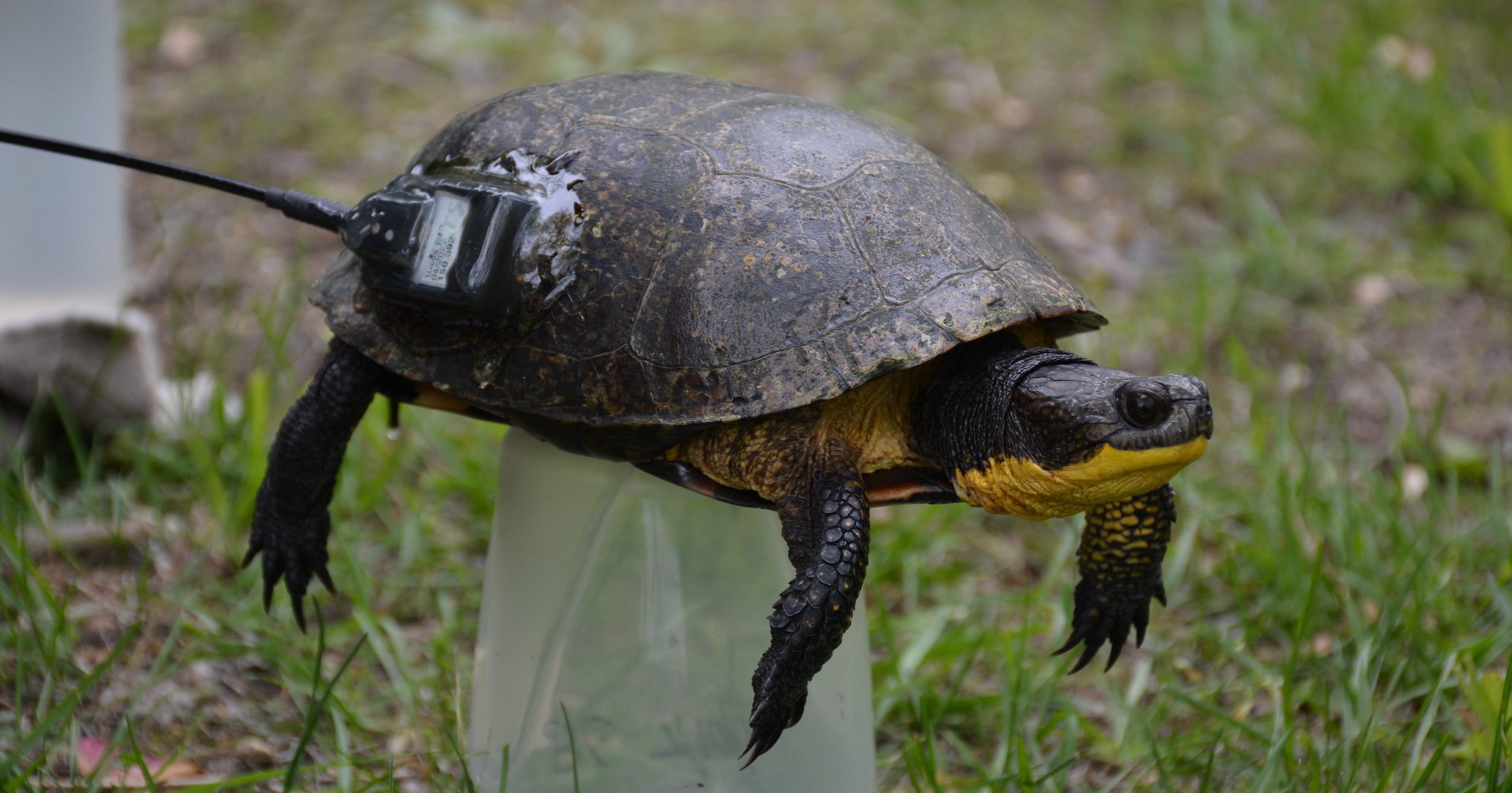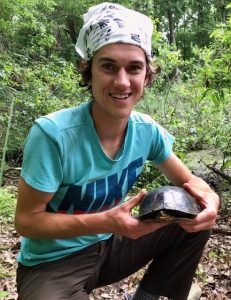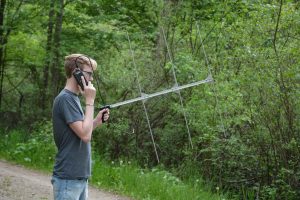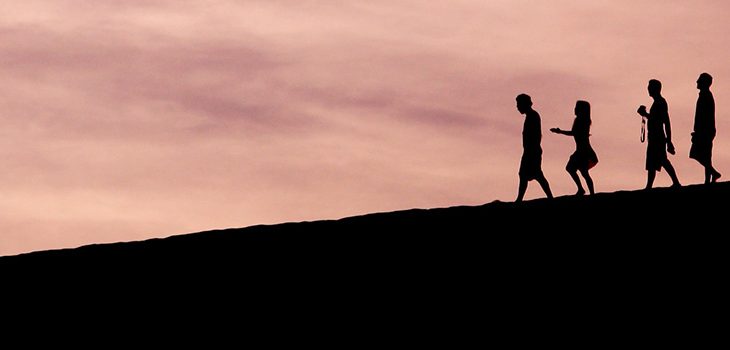Blanding’s Turtles
Research Students:
Liam Elias (Hickory Scholar)
Goshen College ’22
Major: Environmental Science
Tyler Hudson
Manchester University ’22
Major: Environmental Studies

WHAT IS THE RESEARCH?
Blanding’s turtles are Indiana state endangered semi-aquatic turtles that rely on multiple habitats for foraging, laying eggs and breeding. Liam and Tyler trapped and attached radio tags to four female and two male Blanding’s turtles to better understand their habitat usage and behavior in hopes of better protecting them.
Research shows that Blanding’s turtles, especially females, travel long distances, from wetlands to sandy hills where they lay their eggs. Because they cross a range of habitats, this species is particularly impacted by habitat loss, habitat fragmentation and land development.
After attaching radio tags, Liam and Tyler went into the field each week to relocate the turtles using a radio telemetry receiver and antenna, and recorded these locations using a GPS unit and triangulation. Tyler also determined multiple habitat characteristics at each turtle location, such as soil type, vegetation, topography and other features using GIS.
Liam experimented with using different types of bait in the turtle traps to determine which would be most effective for capturing turtles in future surveys. Liam used sardines, crayfish, and flashy lure. Based on the food selection, this experiment could also help inform where the turtles prefer to forage.
WHAT IS THE DAY-TO-DAY LIKE?
 Liam and Tyler’s days in the field started between 8 and 9 a.m.
Liam and Tyler’s days in the field started between 8 and 9 a.m.
Mondays: placed and baited four traps in each of three wetlands.
Tuesday-Thursday: checked each trap first thing in the morning and refreshed the bait box as needed. Some days required catching crayfish for bait with dip nets in various wetlands, to stock up their supply.
Fridays: as they checked traps, they also removed them from the wetlands because they were not able check traps on the weekends.
During two afternoons each week, Liam and Tyler hiked across the Merry Lea property with telemetry equipment to locate turtles and map how far the turtles traveled.
If they captured a Blanding’s turtle in a trap, they recorded its weight, shell dimensions, age and sex, and glued a radio tag onto its shell. They then assigned a name for identification purposes, naming most turtles after Merry Lea and Goshen College staff, before releasing the turtle where it was captured.
HOW WILL THIS RESEARCH INFORM OR IMPACT MERRY LEA AND BEYOND?
 This pilot study confirmed the presence of endangered turtles – males and females – living at Merry Lea. This knowledge could call for further research to study Blanding’s turtles and potentially guide habitat restoration efforts for their conservation.
This pilot study confirmed the presence of endangered turtles – males and females – living at Merry Lea. This knowledge could call for further research to study Blanding’s turtles and potentially guide habitat restoration efforts for their conservation.
The map that Tyler created with habitat characteristics and turtle locations could help reveal where else Blanding’s turtles may be located across Merry Lea’s property and other wetlands. This map can be replicated in other places and Tyler hopes this research encourages other parks to get a license to track and research Blanding’s in their locations.
Both Liam and Tyler see opportunities for publishing their results, and potential for continuing this study in the future.


